Making a good ending to any story is difficult, and it’s arguably even harder for video games, which have to balance gameplay and storytelling. It’s a challenge unique to the medium, which makes the really great endings stand out even more. Join the crew as they discuss their favorite video game endings in this week’s installment of We’re Just Playing.
Suffice it to say that spoilers abound in this article.
Lor Gislason—Earthbound
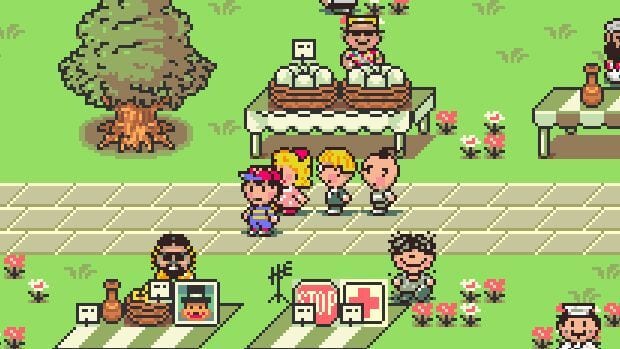
One of my favourite things about Earthbound is that you get to see what happens after you defeat Giygas and beat the game. After a frankly terrifying fight with this cosmic entity, you return home. Ness and his friends Paula, Jeff and Poo can travel the world once again to speak with everyone you met along your journey, visit the places where you had your grand adventures. Characters have new dialogue, people who were once enemies apologize for their behavior, and there’s even a guy who got a new job! It’s such a nice change from the typical “you beat the final boss, good job, the end” of most RPGs. You can end things at your own pace. Because maybe you’re not ready to leave this world and say goodbye to Ness just yet. It’s one of the many reasons why Earthbound is so special and well regarded by fans.
Sean Parker—Far Cry 3
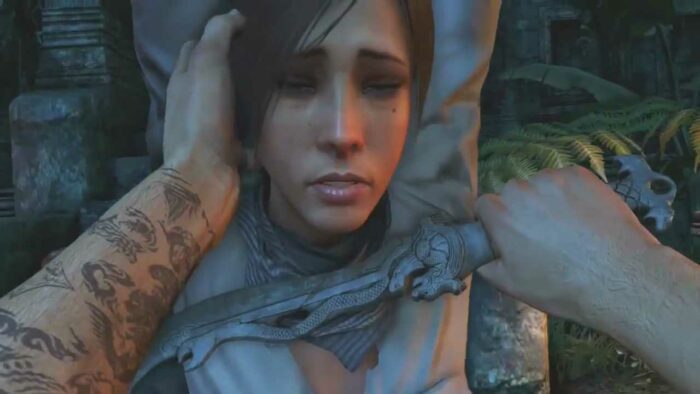
I didn’t play Far Cry 3 when it first released, but did years later when it was offered as part of the deluxe edition with Far Cry 5. I was about halfway through Far Cry 5 and it was going by too fast, so I decided to just start Far Cry 3. I think I finished it in less than two weeks. It pretty much owned all of my free time and rightfully so. I became an instant fan of the Far Cry series after playing the fourth installment, and though five was a bit of a letdown—especially because the end of that game actually takes place in New Dawn—I keep playing them and I’m ridiculously excited for the next game. Far Cry 3, however, has the best villain I’ve ever encountered in any game, Far Cry or otherwise: Vaas Montenegro.
Not only is Vaas a vicious killer, but his arc is bold and smart as is the actor, Michael Mando, who plays him. Here’s the thing: you defeat Vaas maybe about three quarters of the way through Far Cry 3 before going after the guy in charge, Hoyt. It doesn’t hold as big of a punch as the emotional resonance you feel when going through the drug trip on your way to Vaas, but the theme behind the story of the game is more about the warrior you choose to become and how your character, Jason, begins to enjoy the killing as the player becomes more attuned to the violence as well. In this way the player is slowly transitioning into the thing he despised in Vaas: a vicious killer.
The finale culminates in a choice as one of your allies, Citra, turns against you. Drugging you, the way Vaas does, she offers you the chance to become the greatest warrior the island has ever seen. You walk a fiery path filled with the angry, berating the concerns of those closest to you. Then, with your blade pressed against the neck of your girlfriend, you’re forced to choose between violence or love. So, who do you choose to become: save your friends and leave the island or commit yourself to becoming a true warrior? I think I’ve come to find that I love a story with a lesson and also generally I enjoy the choose your own ending route Ubisoft has done throughout these games. Should the player choose to remain on the island, their fate is sealed in an alternatively grim manner.
Christopher Blackmore—Bioshock
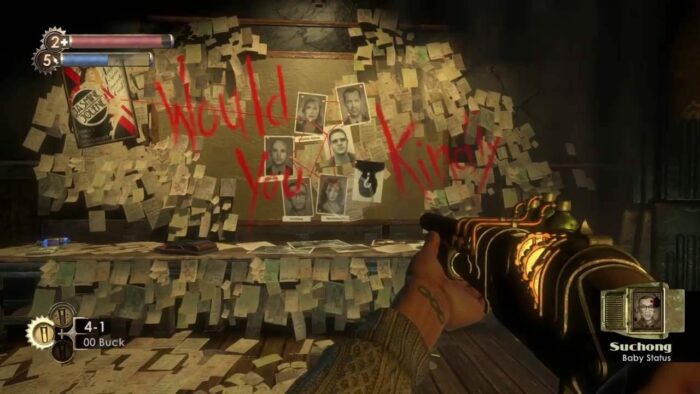
Bioshock is a master-class in video game story telling. It depicts one of the most interesting and vicious video game worlds ever coded, and it still holds up today. It is also the game with my personal favorite ending that I still think about and marvel at how the team pulled it off. I am, of course, talking about the “would you kindly” mind control reveal.
After fighting your way through the ravaged underwater city of Rapture, you finally confront the CEO of all the chaos, Andrew Ryan. Adorned in a gold suit and playing a spot of mini golf, he’s surprisingly calm about your presence. As you approach him, player control is taken away, as Andrew seems to be able to control you with the utterance of the phrase “Would you kindly”. In his demonstrative speech, Andrew reveals that the player has been a slave to the phrase “Would you kindly.” They were mind controlled to get to this exact point in the world. Never has the penny hitting the ground made a louder sound.
We flash back to various points in the game where Atlas, your only assumed ally in this fractured world, was interacting with you. And they all come accompanied by that fated phrase. I cannot tell you the chills I experienced when this was revealed. My goodness was this baked in well. Not only is it a genuinely brilliant and unforeseen twist, but the premise of the twist has a deeper meaning about how we interacted with the game. For example, at the beginning, you come across your first weapon: a wrench. Atlas casually says something like, “now, would you kindly find a wrench or something.” You cannot progress through the game until you pick up that wrench and use it on the nearby blockade. Any other game would just pass this off as the tutorial-lite section. But the developers knew what they were doing from the start. It’s a seamlessly excellent synergy between narrative device and video game mechanics.
Of course the mind control reveal is the gut punch, but the salt in the wound is Atlas being the true villain all along. His deceit really hurts, as he’s been, what you thought, the only voice of reason in such an unreasonable world. But in the end, everything alive in Rapture has overspilled with moral poison–and it makes you want out even faster. The actual ending is a big boss battle with a hulked-up Atlas, now Frank Fontaine. It is fine for what it is. You want to defeat him based on his deceit and control, but it’s a standard shoot him until he’s dead set-up. You can’t help but think nothing you do at the end would have beaten that earlier reveal.
Choice is something Bioshock would lean heavily on in terms of narrative in future titles. Choice is a fundamental design decision in most, if not all video games. And the fact that this idea of choice was tackled in such a clever and shocking way, cements it in my mind. I don’t think modern video games really stick endings anymore. Bioshock was confident that its ending sequence would work. And it absolutely does. It would be refreshing to see newer titles stride for this kind of focus. I regard Bioshock’s twist to be the best in any game. Now, to future developers I say, “Would you kindly attempt to make a better twist ending?”
Johnny Malloy—Shovel Knight: Shovel of Hope
When I was a kid, video games didn’t even have endings. I realize that makes me sound like a Boomer, but I’m actually a Gen X-er, so I’m indifferent to your pointless labels. All jokes aside, I was an arcade kid who would play games that almost exclusively had no endgame.
Even when the NES came out, a lot of the early games were arcade ports or titles with no endgames. Even when a game did have an ending it would usually be one screen, or you’d be treated to something as basic as white text on a black background saying “Congratulations!” (if they could manage to even spell that one word correctly).
An excellent ending back then was something like Super Mario Bros. 2 (the U.S. version), where you got to see a celebration as well as all the playable characters and how many times you used each of them, followed by a credit sequence with a sleeping Mario.
Fast forward to the SNES era and The Legend of Zelda: A Link to the Past, whose ending is still among one of my all time favorites. It shows how all the characters you interacted with during the game turned out after you saved them from ruin. We check in on the King, the townsfolk of Kakariko Village, the twin lumberjacks, and perhaps—most heartwarmingly—Flute Boy reunited with his father.
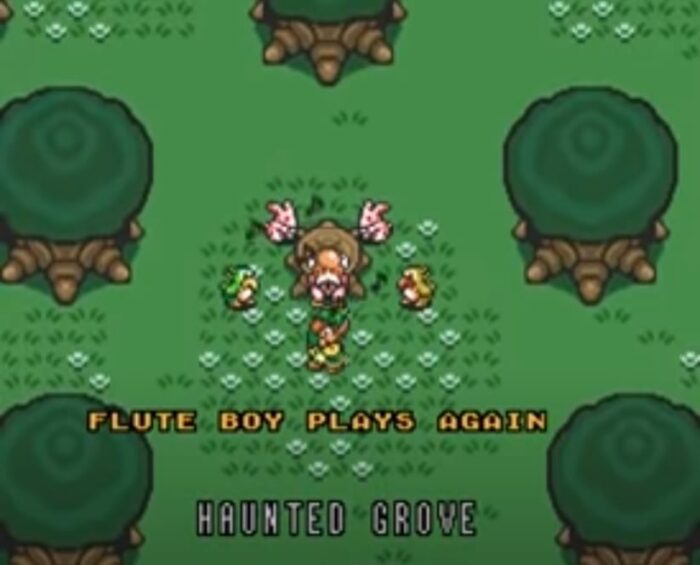
When Shovel Knight came out it was highly regarded as a brilliant homage to both NES and SNES games. While the look was somewhere between 8 and 16 bit, it was very clearly going for the 8 bit feel. Upon completing the game, you are treated to an equally amazing ending where you are shown how everyone is doing. The good guys, the bad guys, everyone is included.
There are plenty of games that do the retro look, and drop in over-used references from classic games (I, personally, would like to see 75% less “It’s dangerous to go alone” jokes) but few forge their own trail as well. Callbacks and fan service are OK, but the entire experience shouldn’t be a barrage of “Remember [reference]?”
Shovel Knight’s characters all have personality. They have a purpose and a motivation. This continues on with all the glorious DLC Yacht Club Games blessed us with after the main game is complete. More games should be like Shovel Knight. When you complete a game, especially one that is a decent challenge, it’s nice to be rewarded for it.
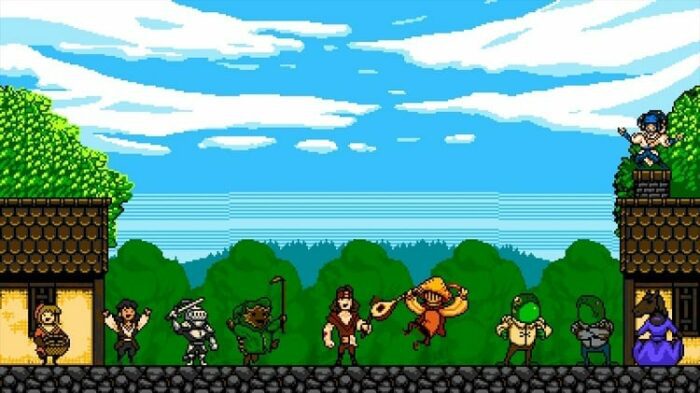
Collin Henderson—LISA: The Painful RPG
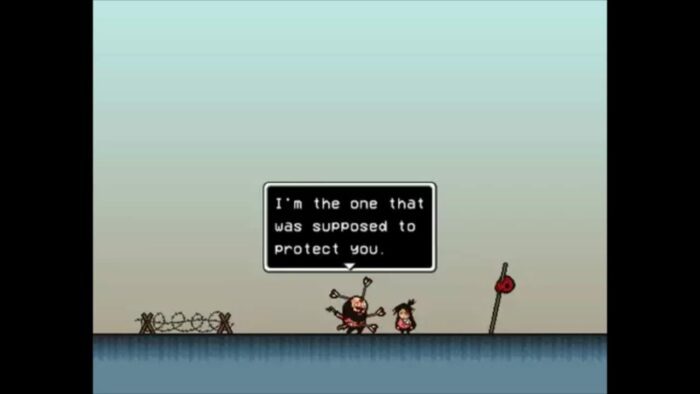
I’m going to talk about LISA: The Painful RPG once again for this entry, and I’m going to throw a big old spoiler warning on it. It’s an amazing game that’s worth anyone’s time.
Anyways, LISA: The Painful is, on the surface, a post-apocalyptic RPG, but as it goes on, it becomes clearer that it’s really a character study in awful trauma. Every member of the main cast has a painful, sad back story, and those tragedies come to inform everything they do throughout the game. This is no clearer than with the game’s protagonist Brad, a mostly mute player character who harbors a unique darkness all his own. He starts off as a seemingly generic male hero, one who is destined to save the girl (in this case, his adoptive daughter Buddy, and the world’s only known female). She’s been kidnapped by the army of one of Olathe’s warlords, Rando, and they want to do God knows what to her.
Brad inflicts some pretty horrific violence on people throughout the game’s run time. The fact that he’s addicted to Joy, a drug that makes the user feel absolutely nothing, but eventually mutates them, doesn’t help, as the long-term effects of the drug start manifesting in these violent outbursts. Brad brutally beats and kills many characters, a lot of whom where his friends. They sold Buddy out to Rando’s army in exchange for… well, you can take a guess. Near the game’s climax, he even runs into his father.
The game’s first scene is Brad’s father Marty abusing him, throwing bottles at him and calling him names, saying that he’s weak. We find out through flashbacks in the DLC that Marty’s monstrous nature is so much worse than that; he sexually abused his daughter, the eponymous Lisa, and forced Brad, as a kid, to partake. It caused Brad to develop a hero complex after his sister’s suicide, so it completely makes sense that he views himself as a renegade avenger despite the terrible acts he commits. And when he confronts Marty, Buddy tries to stop him. She shields Marty’s body with her own, saying that he’s changed, that he was taking care of her. The player is seemingly given a choice to spare or kill Marty, but that’s wrenched away because you aren’t playing as a blank slate hero. You’re playing as Brad Armstrong, a broken, sad husk of a man, and Brad wants to kill his father. And ultimately he does, right in front of Buddy.
Buddy flees from Brad, thinking him to be a monster, and the following confrontation Brad has with Rando’s army only further proves that point. Playing as a series of turn based battles, Brad’s Joy addiction reaches its apex, and he single handedly slaughters everyone in Rando’s army, and beats Rando himself almost to death. Rando’s mask falls off, revealing him to be a physically deformed former martial arts student of Brad’s, and he relents to Brad’s violent outbursts. Brad, beaten and shot through with arrows, limps to Buddy, who asks him why he did everything he did. Brad tries to justify everything, but can’t. The player is given a final choice; does Buddy hug him before he completely succumbs to Joy and become a mutant? Or does she let him wallow in his own misery before losing what’s left of his humanity?
My preferred ending is the one where Buddy hugs him. I view it less as her humoring Brad and more her recognizing him for just how frail he is and taking pity on him. If you choose this action, the final line of dialogue in the game is Brad asking, “Did I do the right thing?” Then it cuts to credits, and the story is over unless you play the game’s excellent epilogue DLC LISAL: The Joyful.
With this final scene, this final line of dialogue, the game completely recontextualizes everything that’s happened. Is Brad a hero? Is it possible to even be a hero in a world this messed up and filled with this many traumatized people? It gives no easy answers, but this final scene is basically the game’s thesis. It questions the idea of video game heroism through violence. While there’s no doubt that most, if not all of the people that Brad kills are just as bad or worse than he is, it still asks how someone can ever be considered “good” if they succumb to their basest, most primal desires. And not only that, it also asks the question of what true evil is. Brad is the way he is because of the awful abuse he suffered at the hands of his father. Meanwhile, Rando’s army, who commit a whole bunch of heinous atrocities, is led by a man who genuinely wants peace in Olathe. You find out at the end that Rando took her so he can protect her from the rest of the world, and that his army is basically acting on their own behalf because of how lawless everything is. So… is Rando really the bad guy? Is Brad the good guy?
Plus, it’s simply the most fitting end to Brad’s character arc. Everyone who takes Joy is destined to become a literal monster, and it was only a matter of time for Brad. And throughout the game, he must confront his own weaknesses by seeing how they affect others. Despite wanting to do the right thing, he does almost everything wrong. And as they say, the road to hell is often paved with good intentions. No one wants to think that they’re the villain, least of all Brad, whose best wishes often turn sour in the worst way.
Whenever I think of great video game endings, this is the one that immediately leaps to mind. It does everything a great ending should; it concludes its story in a thematically rich, powerful way, and it conveys so much about the nature of humans (in particular just how fragile masculinity really is) through its own storytelling. It’s an all-time great for me, and even though it’s soul crushing, it’s a level of writing that I’ve seen very rarely. It’s something special. Soul crushing, hope destroying, but special.


